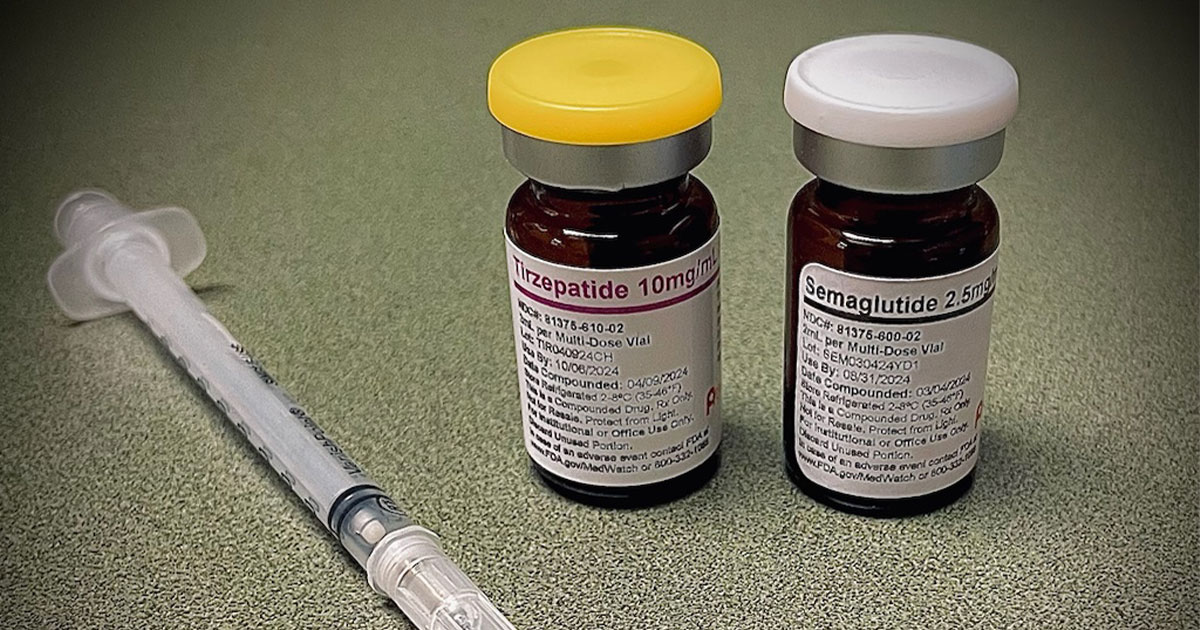In the ever-evolving landscape of diabetes and weight management, GLP-1 receptor agonists—a class of medications that mainly help manage blood sugar (glucose) levels—have emerged as a beacon of hope for those grappling with these chronic conditions.
Among the latest innovations in this realm are tirzepatide and semaglutide, two formidable contenders offering promising outcomes within the medical community.
On the surface, the benefits of GLP-1s appear manifold. They work by mimicking the action of the glucagon-like peptide-1 (GLP-1) hormone, which enhances insulin secretion, suppresses glucagon secretion, and slows gastric emptying, thereby improving glycemic control. This mechanism not only helps regulate blood sugar levels but also aids in weight management, with some patients experiencing significant reductions in body weight.
Tirzepatide and semaglutide in particular have garnered attention for their potent efficacy in lowering blood sugar levels and promoting weight loss. With tirzepatide demonstrating superior reductions in A1C levels compared to other GLP-1s, and semaglutide showcasing remarkable weight loss benefits in clinical trials, the allure of these therapies is undeniable.

However, as with any medical intervention, it's essential to tread with caution and consider the potential drawbacks. While GLP-1s are generally well-tolerated, common side effects such as gastrointestinal disturbances (think nausea, vomiting and diarrhea) may pose challenges for some individuals. Additionally, concerns regarding muscle loss and weight rebound upon stopping the medication warrant further research and vigilance.
Moreover, the cost factor cannot be overlooked. GLP-1 therapies often come with a hefty price tag, placing financial strain on patients, particularly those without adequate insurance coverage. Accessibility remains a pressing issue, underscoring the importance of equitable healthcare access for all individuals who are overweight or with diabetes. Keystone Compounding Pharmacy currently offers both sublingual semaglutide and injectable semaglutide and tirzepatide.
Navigating the complex landscape of diabetes and weight management requires a nuanced understanding of the pros and cons of available treatment options. While tirzepatide and semaglutide hold tremendous promise in revolutionizing diabetes care, it's crucial to approach their use with informed deliberation and individualized consideration.
As we continue to unravel the mysteries of GLP-1s and their role in diabetes and weight management, let us strive for a holistic approach that prioritizes patient-centered care, fosters open dialogue and empowers individuals to make well-informed decisions about their health journey. Together, we can pave the way towards a brighter, healthier future for all.
Written by Logan Morse, Pharm.D., FACA.
Courtesy of Keystone Compounding Pharmacy.
Photo Courtesy of Keystone Compounding Pharmacy.




